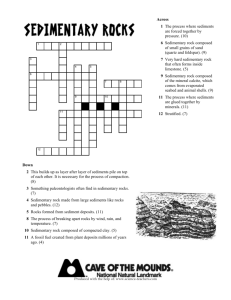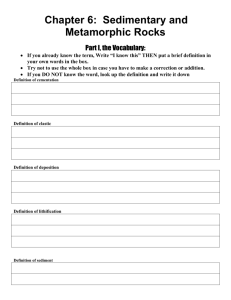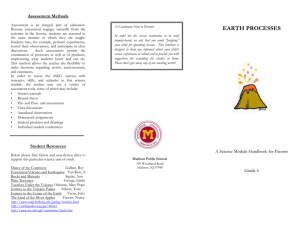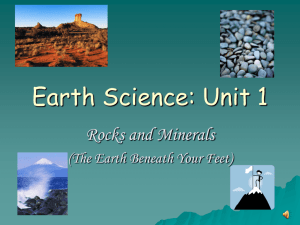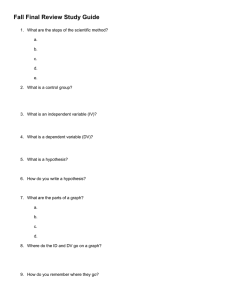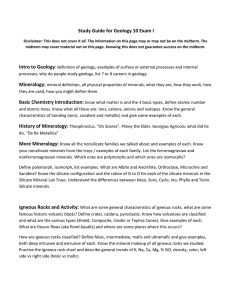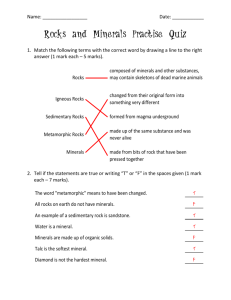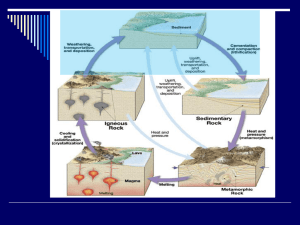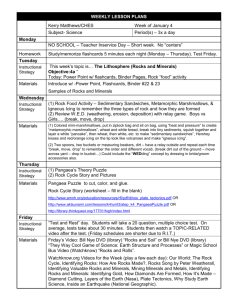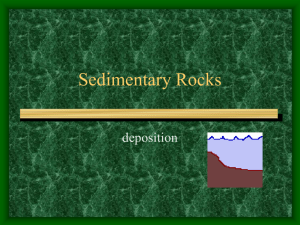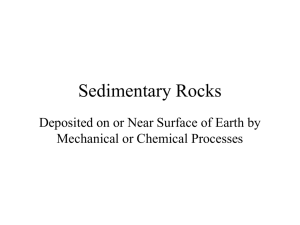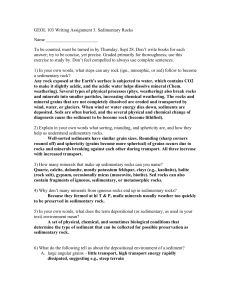Geology 171 – Earth Science Exam 2 study guide
advertisement
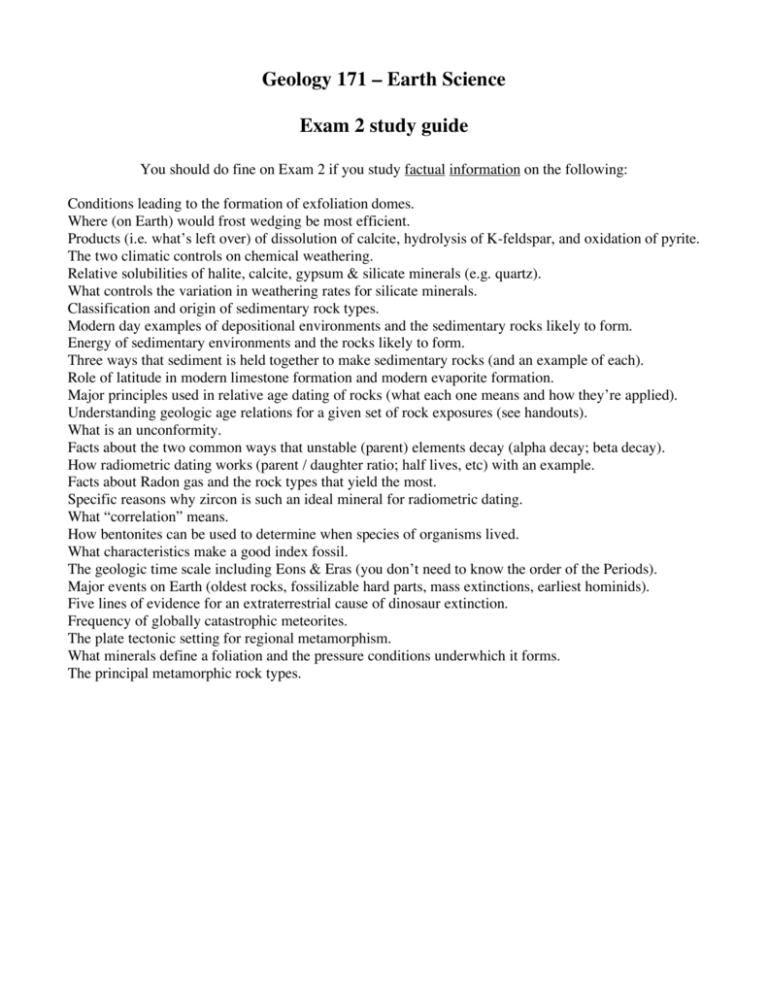
Geology 171 – Earth Science Exam 2 study guide You should do fine on Exam 2 if you study factual information on the following: Conditions leading to the formation of exfoliation domes. Where (on Earth) would frost wedging be most efficient. Products (i.e. what’s left over) of dissolution of calcite, hydrolysis of K-feldspar, and oxidation of pyrite. The two climatic controls on chemical weathering. Relative solubilities of halite, calcite, gypsum & silicate minerals (e.g. quartz). What controls the variation in weathering rates for silicate minerals. Classification and origin of sedimentary rock types. Modern day examples of depositional environments and the sedimentary rocks likely to form. Energy of sedimentary environments and the rocks likely to form. Three ways that sediment is held together to make sedimentary rocks (and an example of each). Role of latitude in modern limestone formation and modern evaporite formation. Major principles used in relative age dating of rocks (what each one means and how they’re applied). Understanding geologic age relations for a given set of rock exposures (see handouts). What is an unconformity. Facts about the two common ways that unstable (parent) elements decay (alpha decay; beta decay). How radiometric dating works (parent / daughter ratio; half lives, etc) with an example. Facts about Radon gas and the rock types that yield the most. Specific reasons why zircon is such an ideal mineral for radiometric dating. What “correlation” means. How bentonites can be used to determine when species of organisms lived. What characteristics make a good index fossil. The geologic time scale including Eons & Eras (you don’t need to know the order of the Periods). Major events on Earth (oldest rocks, fossilizable hard parts, mass extinctions, earliest hominids). Five lines of evidence for an extraterrestrial cause of dinosaur extinction. Frequency of globally catastrophic meteorites. The plate tectonic setting for regional metamorphism. What minerals define a foliation and the pressure conditions underwhich it forms. The principal metamorphic rock types.








